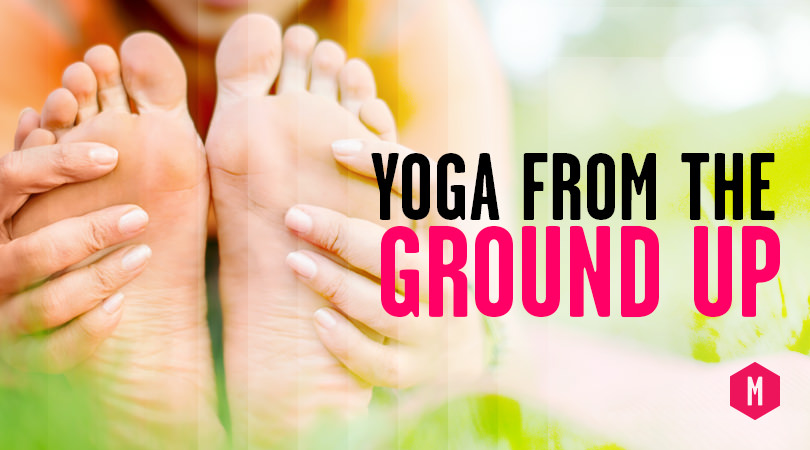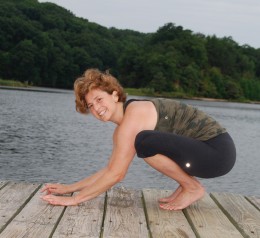
Our relationship with the earth may be the most important connection we have in our lives; afterall, we come from the earth, and some day our bodies will eventually, but inevitably return there. What is more, the gravitational pull to the earth’s centre may be the single most prevalent physical force we will ever know. We are a mere 3959 miles from the earth’s core, whereas the the closest moon, star or planet is almost one hundred times that distance. Despite this, we spend the large majority of the time looking outward, being “star struck”, and in awe of what’s out there and how it might affect us rather than increasing our knowledge and compassion towards what is just under our feet; that which is also our greatest support and biggest resource. Ironically, this mirrors the relationship many of us have between ourself and other beings; there is a great propensity to look outside of ourselves for strength and happiness rather than finding the answers within.
Yoga has long been documented as a journey inward, a practice that stabilitises and balances the mind and body, so it would make sense to begin with a good foundation to the earth, the element that connects us to our roots and to all other beings. In reality, however, we are sensorial-based creatures, and our greatest sense, our sense of sight, leads us to a fascination with the things that we can see. What is more, the ego thrives on affirmation, and as such, seeks measurable results based on analysis. It is easy to understand then, how the desire for mastering advanced asanas has superseded the joy and discovery of fully understanding the subtleties and challenges hidden in ‘basic’ standing postures. As a culture we celebrate the idea of ‘onward and upward’ rather than valuing our ability to root and reflect. One of my favourite quotes comes from Richard Freeman who has revealingly said “advanced asana is for those who don’t get the basics.”
Over half of the bones in the body are found in the feet, and the soft tissue, including fascia and muscle, span as an interconnected matrix from the toes all the way up the torso to the cranium. Our designer knew how important our foundation would be to survival. While the ability to ground and take off stems through the feet, the propulsion comes via the legs, hips, spine, shoulder girdle, arms, neck and head. The whole body “gotta get down to get up” (James Brown).
In today’s world where sitting in a chair has replaced squatting, where driving a car has replaced walking and running, and where yoga practices tend to be more about learning to fly rather than learning to stand with ease and grace, let us remember the joy in finding the subtle connections of the body to enable a deeper rooting to the earth.
Yoga is an integrative practice; we practice reconditioning our mind and body to be more interconnected in the world. Sometimes, however, the ego takes over, and the practice stays in the mundane realm of ‘physical fitness’. We forget the intention behind the practice, the goal of connecting to the earth and all beings. The moment we acknowledge that we have slipped back into the mundane is a beautiful moment: it is the chance we have to reset our intention in the practice, it is a moment to find a steady, joyful place to begin the breath anew. When we find ourself ‘competing’ in some way in the practice, when we don’t listen to physical pain in pursuit of attaining a posture, when we ‘cheat’ to get into an asana and put our body at risk of injury, these are moments to be celebrated. After all, on a macro-level, the yoga practice is about increasing our awareness, so when we start to observe and recognize habit patterns we can begin to change.
This is the beginning of transformation. When our foundation is strong, steady, filled with ease and grace our potential to fly becomes a permanent state of mind rather than a temporary physical feat. In yoga, we build consciously in body and mind, from the ground, up.
Like Lizzie’s style? Catch a class with her online now.
 Lizzie’s practices of yoga include a variety of internationally renowned teachers and methods, however, she found a home in the Jivamukti Yoga method which she has been teaching since 2007. She underwent a liver transplant surgery in September 2013, and her philosophical, anatomical and experiential knowledge of yoga has helped her to overcome the challenges of a chronic illness and of the physical changes one goes through during this type of invasive surgery. Her great passion is in serving others from a place of authenticity and joy. www.freeliz.com
Lizzie’s practices of yoga include a variety of internationally renowned teachers and methods, however, she found a home in the Jivamukti Yoga method which she has been teaching since 2007. She underwent a liver transplant surgery in September 2013, and her philosophical, anatomical and experiential knowledge of yoga has helped her to overcome the challenges of a chronic illness and of the physical changes one goes through during this type of invasive surgery. Her great passion is in serving others from a place of authenticity and joy. www.freeliz.com





Leave a Reply